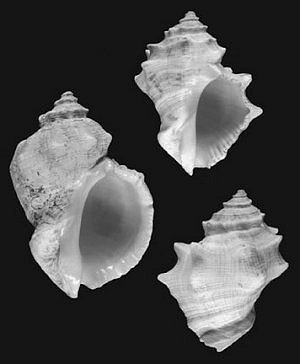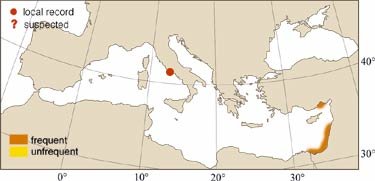
|
Relevant Synonyms
Misidentification
|
|
| photo: S. Gofas / Coll. G. Spada |
|
SHORT
DESCRIPTION
color :
outside of a plain greyish or yellowish tan color, inside of aperture pale orange, juveniles with darker lines in grooves inside the outer lip.
common size :
50-60 mm. |
DISTINGUISHING CHARACTERISTICS
BIOLOGY / ECOLOGY
habitat :
on rocks, near sea level. |
|
1st
Mediterranean record
|

|
|
DISTRIBUTION
|
ESTABLISHMENT SUCCESS
speculated reasons for success :
|
|
|
MODE OF
INTRODUCTION |
IMPORTANCE TO
HUMANS |
|
KEY
REFERENCES
|
|
|
 Purpura carinifera Lamarck, 1822
Purpura carinifera Lamarck, 1822